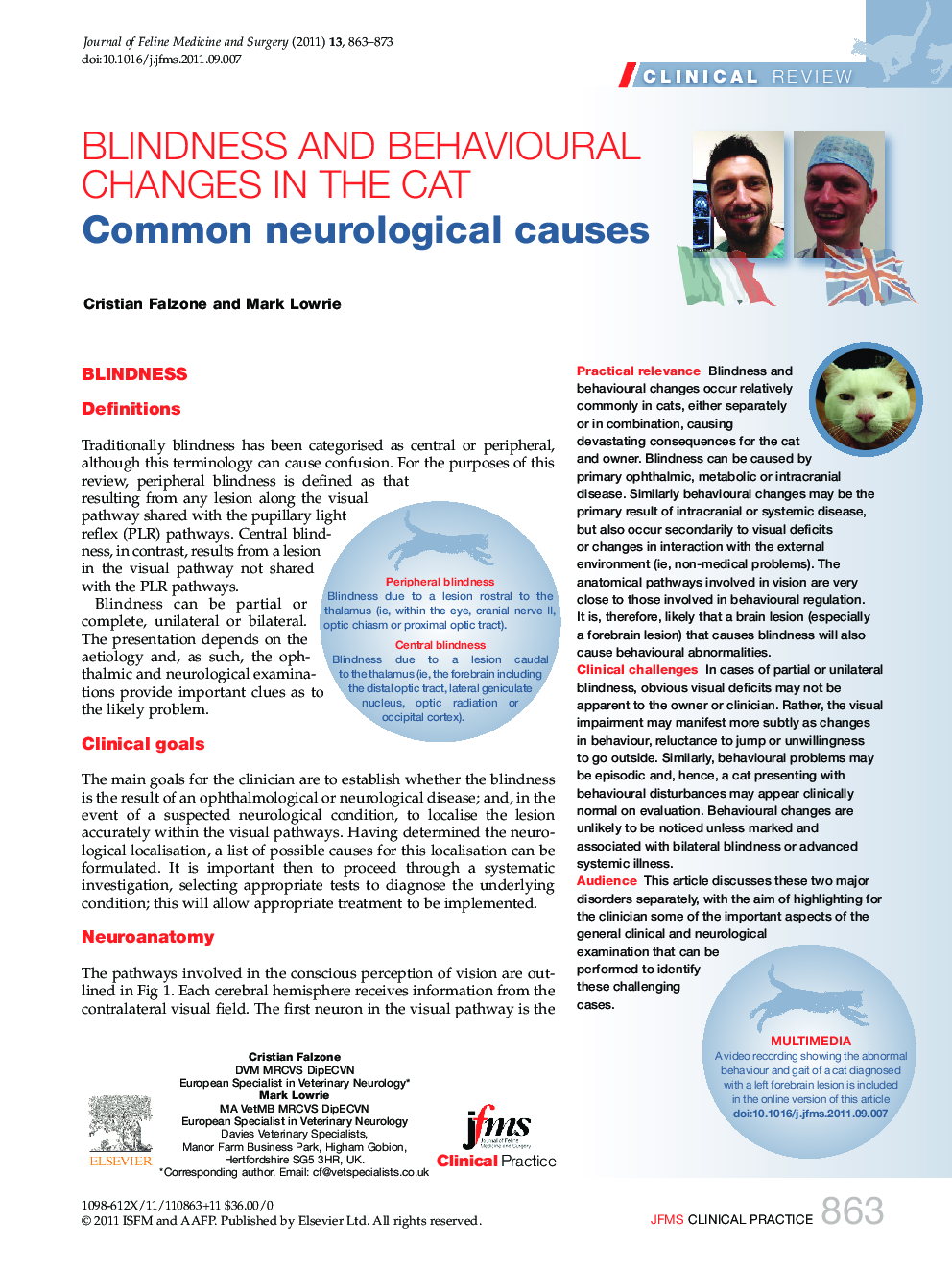| Article ID | Journal | Published Year | Pages | File Type |
|---|---|---|---|---|
| 2397668 | Journal of Feline Medicine & Surgery | 2011 | 11 Pages |
Practical relevanceBlindness and behavioural changes occur relatively commonly in cats, either separately or in combination, causing devastating consequences for the cat and owner. Blindness can be caused by primary ophthalmic, metabolic or intracranial disease. Similarly behavioural changes may be the primary result of intracranial or systemic disease, but also occur secondarily to visual deficits or changes in interaction with the external environment (ie, non-medical problems). The anatomical pathways involved in vision are very close to those involved in behavioural regulation. It is, therefore, likely that a brain lesion (especially a forebrain lesion) that causes blindness will also cause behavioural abnormalities.Clinical challengesIn cases of partial or unilateral blindness, obvious visual deficits may not be apparent to the owner or clinician. Rather, the visual impairment may manifest more subtly as changes in behaviour, reluctance to jump or unwillingness to go outside. Similarly, behavioural problems may be episodic and, hence, a cat presenting with behavioural disturbances may appear clinically normal on evaluation. Behavioural changes are unlikely to be noticed unless marked and associated with bilateral blindness or advanced systemic illness.AudienceThis article discusses these two major disorders separately, with the aim of highlighting for the clinician some of the important aspects of the general clinical and neurological examination that can be performed to identify these challenging cases.
